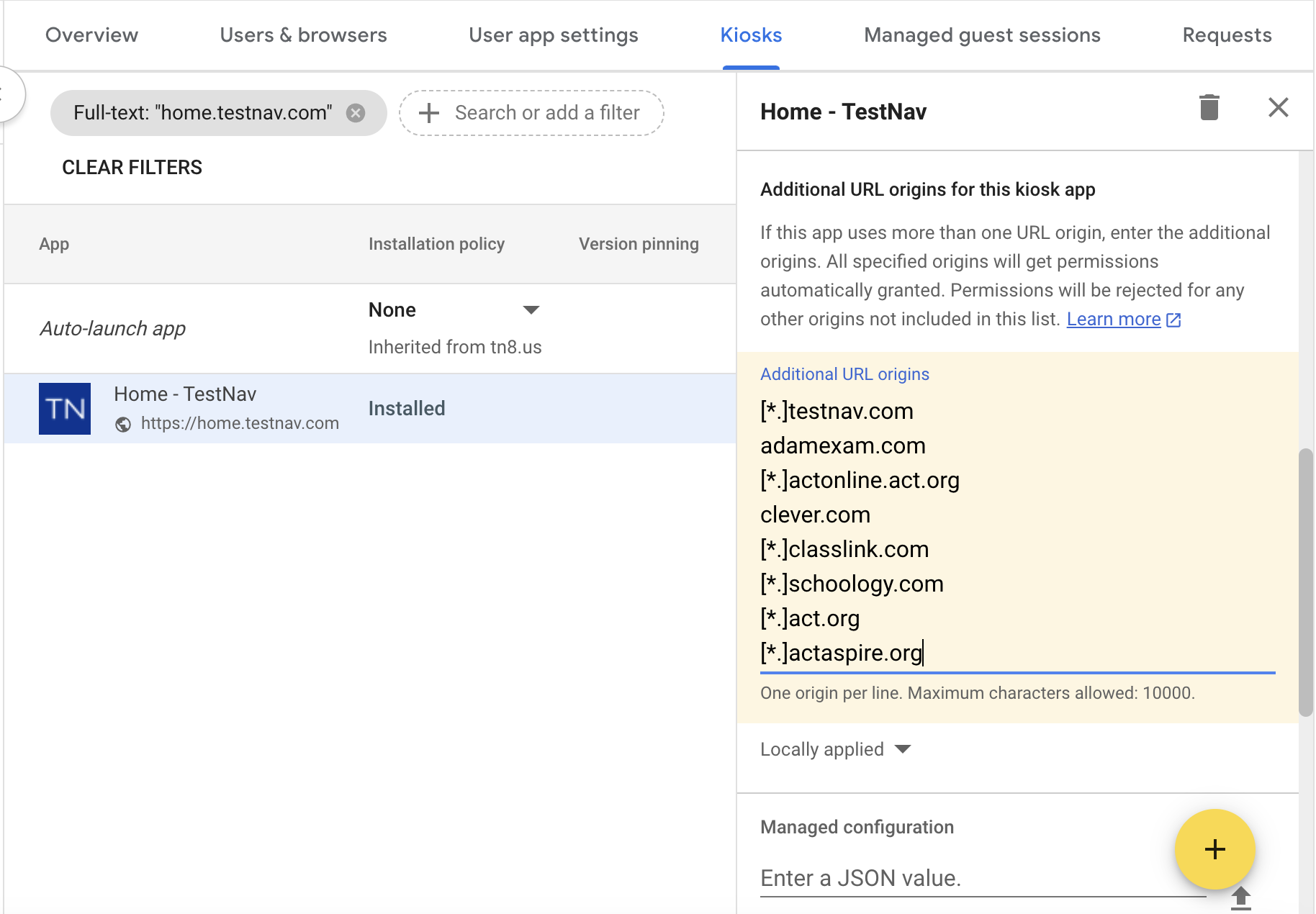Set Up TestNav on ChromeOS
Pearson supports only managed Chromebooks for secure testing. Both before you install TestNav AND prior to each testing session, you should check each device to ensure it is in managed status.
To check the managed status of each device:
- When the student turns on the ChromeOS device, check the screen where the account icon appears. If the student has signed in to the device, instruct them to sign out to see this screen.
- Below the account icon and the start arrow, a managed device will display the managed device icon (
 ) and the domain that manages it. The example below shows Chromebook managed by your-domain_here
) and the domain that manages it. The example below shows Chromebook managed by your-domain_here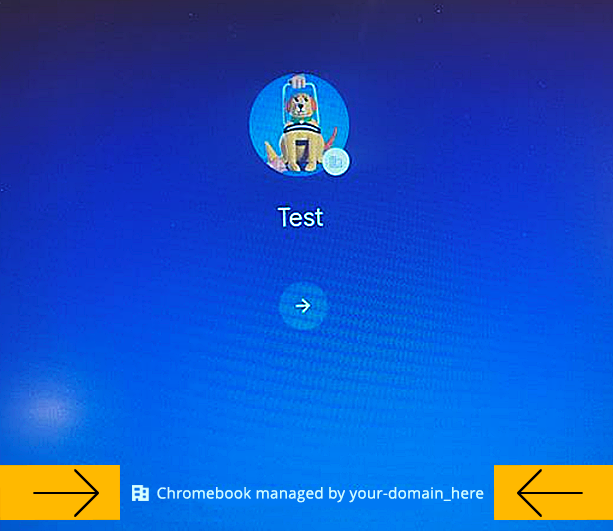
- You can also see the managed icon at the bottom-right of the screen in the status bar before the student signs in to the device. The status bar includes the time, the managed icon (if managed), and more. Selecting anywhere in the status bar opens its menu, where you can also see that the device is managed. Click to enlarge.
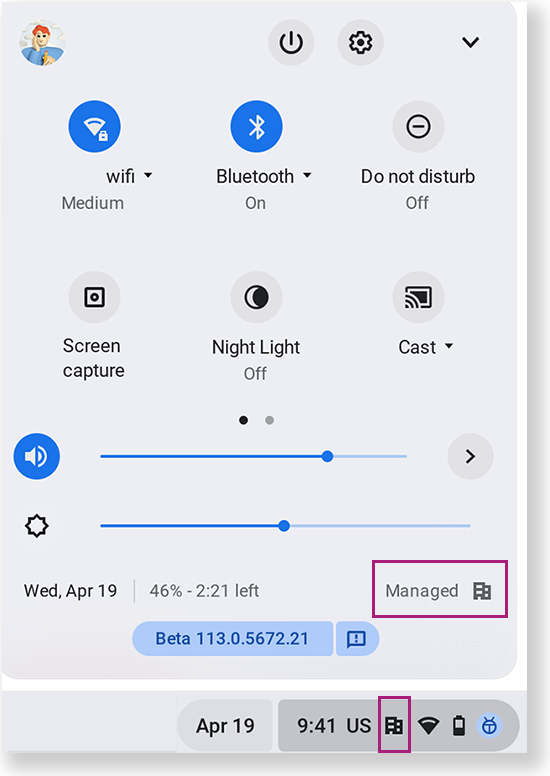
Assign the student a different, managed testing device or re-enroll the device as managed if:
- The managed icon does not appear, indicating that the device is unmanaged.
- More than one account appears on the account icon page, indicating that the device might also contain an unmanaged profile.
During BOTH the infrastructure trial and the actual test, note which specific device each student uses during each test. The TestNav app saves SRFs to only one designated place on the testing device. If an error occurs, you can locate files only on that specific device.
Install TestNav
To install TestNav, first ensure each device's settings are set to keep local data to avoid accidentally deleting the SRF and log files. Then, you add TestNav as a kiosk app.
Content filters and TestNav...
If your content filters are activated when a student signs in to the Chrome device, contact Pearson Support for additional URLs to add to your kiosk settings for URL blocking. TestNav does not require that the student sign in to the Chrome device. As a result, these content filters do not filter as intended during a TestNav test.
- Uninstall the legacy TestNav Chrome App.
- Install the new TestNav Web App for ChromeOS. This app is not available on the Chrome Web Store. It is installed using the Google Admin Console.
- Sign in to the Google Admin Console.
- On the left side, navigate to: Devices > Chrome > Apps & extensions
- Select the Kiosks tab at the top of the page.
- Select the organizational unit for which you want the TestNav app & extension to be added. If you want to add for all users, select the top-level organizational unit.
- Select the yellow + (plus) button at the bottom right corner to expand to see additional yellow buttons. Select the Add by url button and enter https://home.testnav.com/.
- Select Save. Google will then prompt you to allow permissions to this app. Select Agree.
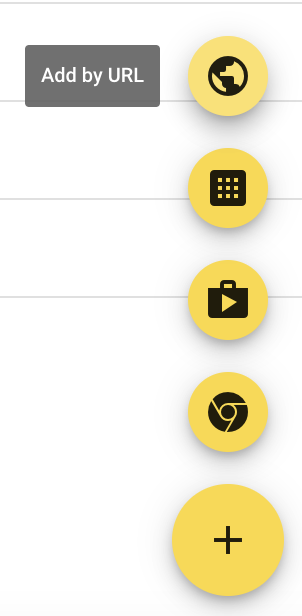
- The new TestNav Web App for ChromeOS appears in the app list.
-

- Select the TestNav app and scroll down the right-side bar to enable Allow new windows to open (full screen).
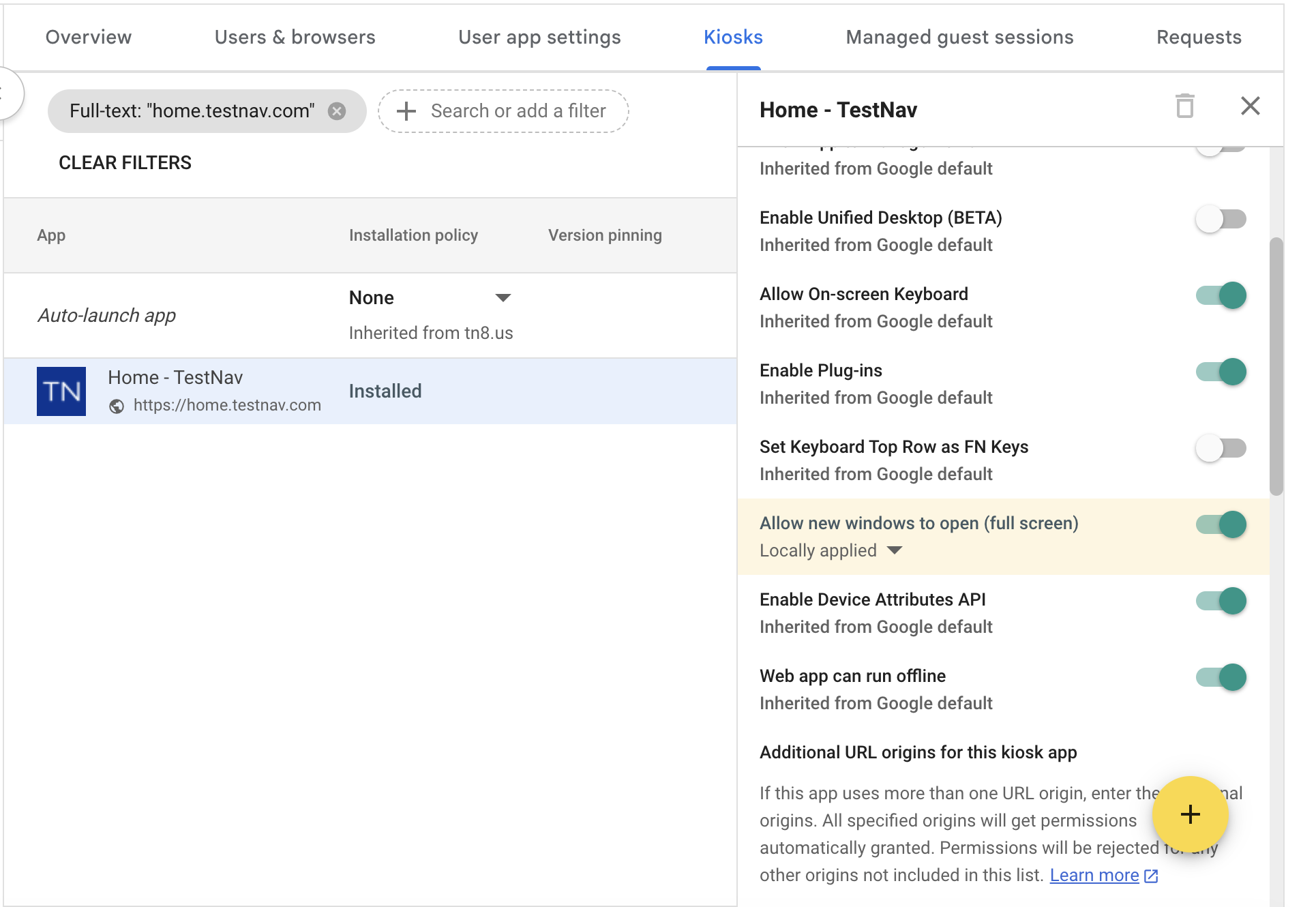
- Scroll down further on the right-side bar to Additional URL origins field to add the following URLs. Note: Additional URLs must be added to allow the TestNav Web App for ChromeOS access to functions outside of the scope of the app URL.
[*.]testnav.com
[*.]classlink.com
[*.]schoology.com
[*.]act.org
[*.]actaspire.org
- Scroll down further on the right-side bar to Extension section.
- Click ADD EXTENSION and from the pop-up list, select Add from a custom URL and the Add Chrome app or extension by ID dialog box opens.
- Select From the Chrome Web Store, which will expand the menu to show an additional selection of From a custom URL. Select From a custom URL.
- Enter the following Extension ID and the URL and then click Confirm:
- Extension ID: gjhfdhjfmmgldldpmfdmbddbegbachgo
- URL: https://download.testnav.com/chrome-extension/update-manifest.xml
- Enter the following Extension ID and the URL and then click Confirm:
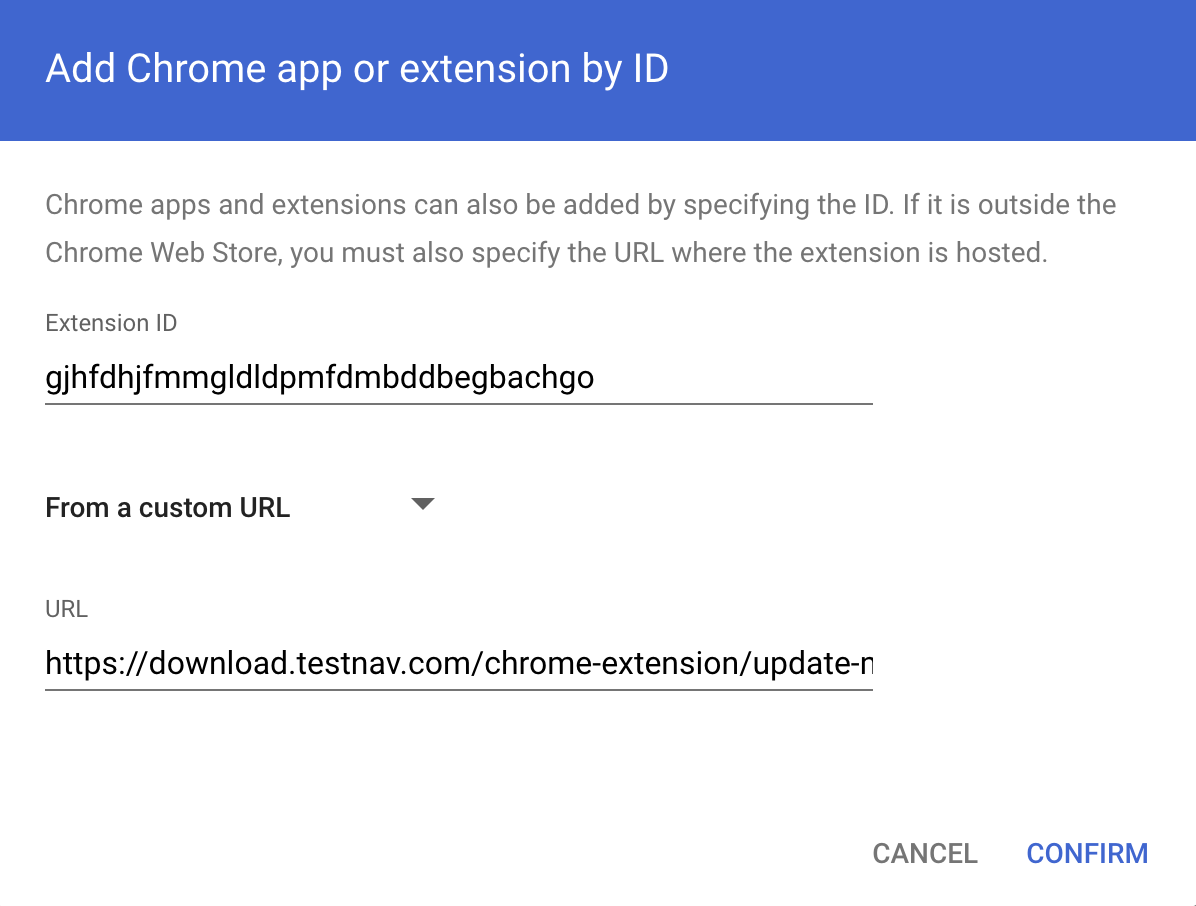
- Click the SAVE button located at the top right corner.

- The new TestNav Web App for ChromeOS and its extension will now be installed for users in the selected organizational unit as a kiosk app the next time they start their ChromeOS device.
Note on accessibility tools/accommodations...
Students with accommodations or accessibility features enabled through their PNP or test form access those features within TestNav. ChromeOS has native accessibility features that might appear within a kiosk floating accessibility menu during testing. Technology personnel should disable this menu before testing to avoid it interfering with the student’s test.
Find and Set Up Student Response File Backups
When a student responds to a test question, TestNav sends the response to the Pearson server. If the network experiences a connectivity issue, or the student encounters an error, TestNav saves the response to a saved response file (SRF). For configuration details, see: Set Up Saved Response Files (SRF).
Run App Check
It is essential to run the App Check on each student device before testing. For details, see App Check.
Sign in to TestNav
- Power on the device, but do not log in. If before a secure testing session, check the device's managed status.
- In the lower left of the screen, select Apps > TestNav to launch TestNav.
A message appears, informing you that you can use <ctrl><alt>s to exit Chrome OS when you first launch TestNav. This works only while the message displays. - Continue with the instruction in: Sign in to TestNav.
- To shut down and exit kiosk mode after the app launches, hold down the Power button.
Run an Infrastructure Trial
Pearson strongly recommends running an infrastructure trial to verify the technology setup is complete and to familiarize teachers and students with the test. Use your training site through your assessment management system to complete the trial before the actual test day.
